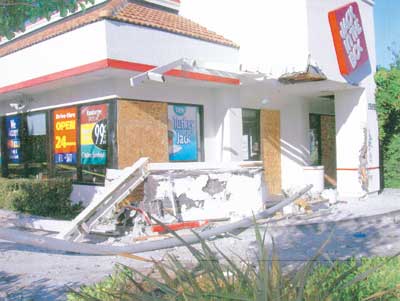Judging from the discussions during last week
’s School Board meeting, emotional reactions to school boundary
changes will not come only from the public.
Judging from the discussions during last week’s School Board meeting, emotional reactions to school boundary changes will not come only from the public.
Trustees were once again presented with options for discussion by the boundary committee, which met every Tuesday for approximately six months to prepare the options.
“I’ve already learned tonight that whatever the committee brings before us, I should approve because they have spent the time to create it,” said Trustee Shellé Thomas in response to Trustee Del Foster.
“Inherently this is a political process,” Foster said. “We tried to remove all the begging and pleading from the podium by turning it over to a committee … but why have a committee if we are going to do their job over for them. They’ve wasted how many hours on this … .”
Trustee George Panos said board members not only should consider the recommendations of the committee but also their own opinions.
“We don’t need to rubber stamp the committee, but if the committee recommendations happen to coincide with our own, then that’s positive,” he said.
The board instructed the boundary committee, led by Deputy Superintendent Bonnie Branco and made up of district staff, parents and community members, to focus on secondary boundaries so the board can make a decision in November.
A decision will be made on elementary boundary changes in January.
All the changes will be implemented in August 2004 to coincide with the anticipated opening of the new Sobrato High School to ninth and 10th graders and the movement of ninth graders to Live Oak High.
Thomas said during the Sept. 22 meeting that she thinks the decision on elementary boundaries is being rushed.
“Maybe we are trying to take on too much at one time,” she said. “I think we should delay this (elementary boundary changes) for a year … Let’s get it right this time. When we talk about what’s optimal, that’s a nice word, but I don’t think it’s the real world.”
Elementary boundaries were changed three years ago, moving some children into a “mini-Barrett” grouping on the Paradise Valley campus to await the opening of Barrett Elementary for the 2001-2002 school year.
Thomas has said consideration should be given to families affected by those changes.
“One of my concerns, one thing we have to consider, is these children that have already been moved,” she said.
Branco has said that the elementary boundaries need to be reconfigured due to overpopulation at some schools and an socio-economic imbalance.
Laurie Faulk, a district parent, boundary committee member and board watcher, urged trustees to give serious consideration to recommendations from the committee.
“Please be careful,” she said. “We need schools that are balanced. We need high schools and middle schools that are not ‘haves’ and ‘have-nots.’”
The boundary committee has presented trustees with nine options, four for secondary boundaries and five for elementary boundaries. During the Sept. 8 board meeting, trustees directed the committee to eliminate one alternative for secondary boundaries, the alternative which called for keeping the original middle school boundaries, and one alternative for elementary boundaries, the alternative proposing no change in elementary boundaries.
Thomas said she would like to see the board agree not to split up elementary schools to feed into the two middle schools. Currently, El Toro, Nordstrom and Jackson split between Martin Murphy and Britton middle schools.
The remaining secondary options the board is considering include using the current middle school boundaries as the middle and high school boundaries, and two alternatives that move the boundary lines but use the same boundary for middle and high schools.
Trustees appeared to favor alternatives 1 and 2 over the last option. According to the report from the committee, using the current boundary would “minimize adjustment and confusion,” allow the feeder school concept and balance enrollment and ethnicity.
The points against this option, according to the report, include the fact that Live Oak would be located within the Martin Murphy/Sobrato boundary, the majority of the future growth is projected within that boundary and the majority of the low-income housing is within the boundary.
Alternative 2, which seems to be favored by some trustees, would have schools residing in their own boundaries, with Britton feeding into Live Oak and Martin Murphy into Sobrato. According to the report, “this boundary allows for minimal modifications as the growth begins in the Sobrato area.”
Against alternative 2, however, the report says the boundaries would be unbalanced ethnically and socio-economically, some children who live within walking distance of Live Oak would be going to Sobrato, and Sobrato would remain the smaller school until future growth in the area occurs.
Much of the board discussion concerned the guiding principles created by the boundary committee:
“Maintain neighborhood schools; emphasize safe walking routes to and from school; minimize disruption (movement from school to school); equalize enrollment; size of school supports educational setting and capacity of site; account for future growth; address/equalize ethnic balance; address transportation issues; and support feeder school system.”
Trustees asked Branco to bring to the next board meeting a ranking prepared by the committee.
Foster said he was prepared to agree with the recommendations from the boundary committee.
Trustee Jan Masuda said she would agree with Foster, adding that her concern is getting the information out to the community as soon as possible.
Thomas said she was disappointed other board members seemed to want to let the committee make the decision.
“I don’t think that’s what they (the committee) want,” she said. “Their role was to present us some options so we could make the decision … It’s very easy for us to abdicate our responsibility, and I believe we are.”








